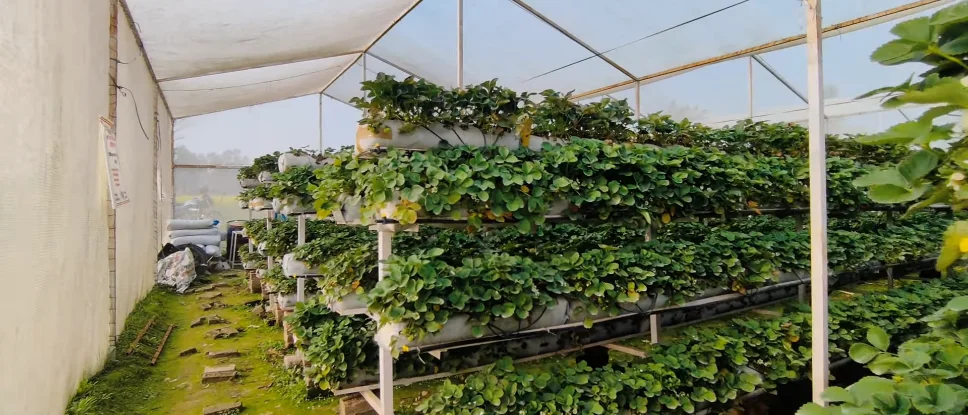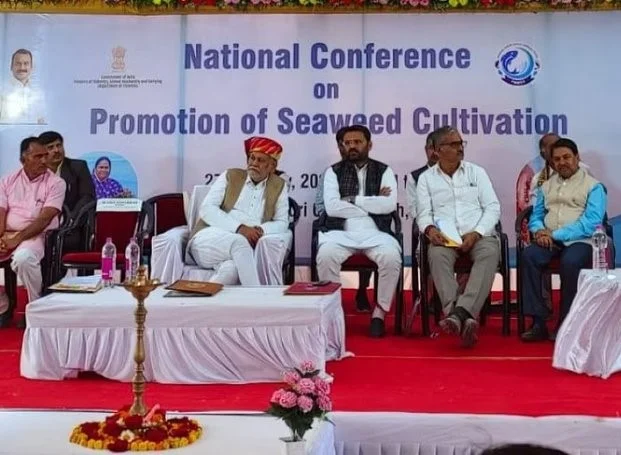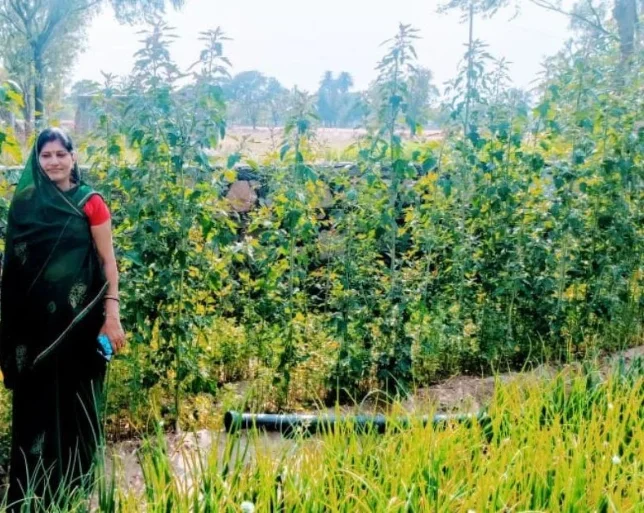In 2013, Arvind Dhakad from Madhya Pradesh embarked on an agricultural journey to Israel. It was his first encounter with a remarkable sight: thriving crops without soil.
“I was amazed to see a variety of vibrant crops flourishing without the need for soil,” recalls the 40-year-old farmer.
During his visit, Arvind intended to learn about grape and guava cultivation techniques. However, it was the sight of strawberries flourishing in water tanks that captivated him the most.
Israel has pioneered soil-less hydroponics farming—a method particularly suitable for farmers facing land constraints and limited water resources.
Inspired by what he saw, Arvind resolved to introduce soil-less farming to his village, Riyavan in Ratlam. Traditionally known for cultivating crops like garlic and soybean, Riyavan welcomed this innovative approach.

Also Read: Woman Transitions to Organic Farming Following Father’s Cancer Death, Doubles Income
Arvind and his brother Ravindra delved into hydroponic farming without any formal training. Today, they boast a high-tech nursery that generates up to Rs 10 lakh annually.
“We started hydroponics farming without any formal training. Now, we’ve built a successful nursery,” shares Arvind.
The Dhakad brothers proudly claim to be pioneers of hydroponic farming in Madhya Pradesh. We caught up with them to learn about their journey.
Hailing from a farming background, Arvind pursued commerce while Ravindra studied life sciences. After a stint at an agrochemical company in Karnataka, Arvind returned to his roots, inspired to follow his ancestors’ path as farmers.

Traditionally, Arvind’s family cultivated garlic, wheat, mustard, soybean, grapes, guava, and strawberries on their 10-acre farm.
In the past, Arvind grew strawberries conventionally, tilling the land with tractors, preparing beds, and then planting around 8,000 saplings per bigha after mulching and installing drip lines.
Also Read: Couple harvest sweet Strawberries in Konkan’s heat: A Couple’s Permaculture success story
During his trip to Israel, Arvind discovered that he could achieve eight times the yield using hydroponics in the same space.

Excited about adopting this new method upon his return, Arvind sought assistance from the agriculture department but found none. “No one knew about hydroponics in our area back then. I had no guidance,” he reminisces.
Despite facing challenges, Arvind remained determined to establish a hydroponic unit. Initially, he purchased a few 110 mm PVC pipes and learned to cut them himself.
“At first, I didn’t know how to cut the pipes or arrange them into grids. I was clueless about drilling holes for net pot holders and adding nutrients to the water tank,” he recalls.

Drawing from his memories of the Israel trip, Arvind managed to assemble the pipes. He planted saplings in cocopeat-filled net pots, added water-soluble nutrients to the reservoir, and turned on the water supply.
“It was a success! All 500 saplings survived,” Arvind proudly states.
Since then, he hasn’t looked back.
Presently, Arvind cultivates a diverse array of seasonal vegetables, fruits, and flowers spanning tomatoes, spinach, coriander, chillies, capsicum, broccoli, lettuce, parsley, kale, strawberries, and 10 types of figs across his 8,000 square feet hydroponic system.
Since initiating their ‘smart’ hydroponic farming, the brothers have integrated grow bags and implemented advanced techniques like the NFT (Nutrient Film Technique) system. They’ve also introduced aquaponics towers for tuber cultivation and adopted the practice of grafting large fruit trees such as grapes, jamun, and guavas in their state-of-the-art nursery.

Describing their nursery, Arvind explains, “Traditionally, people plant tomato and chilli seedlings in soil. Instead, we grow them in trays filled with cocopeat and nutrients. This approach enables us to produce saplings within 20 to 25 days, whereas the conventional method takes around 45 days.”
“We utilize the aeroponics method to cultivate tubers like potatoes. It involves spraying water directly onto their roots,” he explains.
Moreover, Arvind concocts a unique insecticide using five types of leaves typically avoided by animals such as cows, buffaloes, and goats. “Leaves that animals don’t consume are excellent for making insecticide,” notes Arvind.
“We create a blend with papaya, neem, dhatura (thorn apple), karanj (Indian beech), arandi (ricinus), and sitaphal (custard apple) leaves. These leaves soak in water for 15 to 20 days until they decompose and emit an odor that repels insects effectively, serving as a natural pest deterrent,” he explains.
Instead of solely focusing on selling their produce, Arvind prioritized educating city dwellers through practical demonstrations. “We receive numerous inquiries from people nationwide and even abroad. Our primary goal is to assist urban residents in cultivating chemical-free vegetables in limited spaces, whether it’s their terrace or balconies,” he explains.

Regularly, the brothers host a paid two-day workshop every month to train individuals passionate about farming.
Sameer Mishra, based in Indore and running Alphabet Services, a logistics company, always had the desire to cultivate organic vegetables for his family and community. During the COVID-19 pandemic, he connected with Arvind and established a 4,000 square feet hydroponics farm to grow various vegetables like kale, strawberries, lettuce, bell peppers, and 15 different types of exotic tomatoes.
“Arvind has been my mentor in hydroponics, teaching me about different systems like NFT, Dutch bucket, and the wick system. His training was thorough, and he provided detailed explanations. He even has various models in his nursery, which made it easy for me to grasp how the system functions,” he shares.
Together, they’ve assisted over 7,000 individuals from cities like Mumbai, Delhi, Hyderabad, Indore, Lucknow, as well as neighboring countries like Nepal and Sri Lanka, in learning the hydroponic cultivation method.

“Even businessmen with multimillion turnovers attend our workshops. It’s surprising yet fulfilling to see these individuals, who earn crores, eager to learn farming. It’s a sign that our work is making a difference,” he remarks.
Arvind shares that their vision extends beyond their current efforts. “Currently, shoes are sold in showrooms while crops, something we all need daily, are often sold at very low prices by the roadside. Our vision is to make agriculture profitable through technology. We want future generations to feel proud and empowered in choosing farming as their livelihood.”









